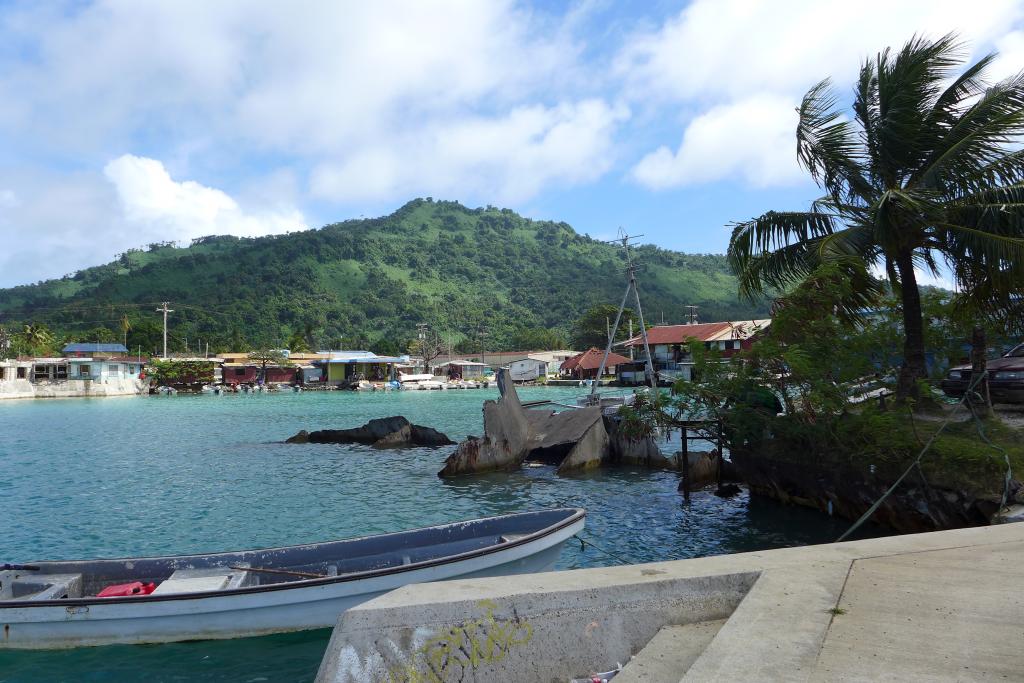
If you are a regular follower the Kuli Kuli Blog, it is probably safe to say that you like to maintain a healthy, balanced diet. As healthy lifestyles have become more main-stream in the United States as of late, it is now fairly easy for the average American to eat right thanks to a widespread availability of fresh, organic, and locally grown foods. We have thriving farm stands and massive health food stores like Whole Foods, and Trader Joe’s. In most places we also benefit a fairly well-developed education system that emphasizes the importance of healthy eating. We really are lucky to have the choice to eat right and it’s something we should never take for granted.
Food Deserts and Food Islands
Imagine what it would be like if you, as a health conscious, nutritionally aware individual simply did not have the option of eating healthy foods. Many of us are familiar with the concept of food deserts in the United States where people have limited access to nutritional foods, but what about food islands?
In the Pacific island Nation of Micronesia; citizens have faced considerable nutritional problems in the modern era due to unfavorable American Influence. Through no fault of their own, Micronesians have been left with no choice. It makes the most financial sense to eat a diet made up almost entirely of a small sampling of imported American food with almost no nutritional value. This has led to a range of health epidemics such as obesity, Vitamin A deficiency, heart disease, and diabetes.
What led to Micronesia Malnutrition?
So how and why did nutrition in Micronesia become so poor? Although Micronesian islands are fairly small for the most part, agricultural resources were strong enough in general for natives to maintain a fairly healthy traditional diet in the past. With staple foods such as coconuts, taro root, breadfruit, and fish, people were generally fairly healthy.
What went wrong? To find the answer we need to look back to the mid 20th century following World War II. During the War, Micronesia was controlled by the Japanese who then introduced white rice as a staple food. However, after Japan surrendered at the end of the War, Micronesia was put under trusteeship of the United States. With little to no natural resources, the US was primarily interested in the islands as a strategic point. The islands are utilized to keep an eye out in the Pacific region, and nothing more.
As a cheap and easy way to maintain an influence over Micronesia, the US Government began making food imports. These primarily consist of unhealthy, addicting snack food such as spam, white rice, ramen, sugar, salt, and candy. The Federated States of Micronesia (FSM) did officially gain independence in 1986 under the Compact of Free Association. This means that it is technically a free nation, yet the US still maintains a heavy influence. FSM is made up of roughly 600 islands divided into four Island States: Chuuk, Pohnpei, Yap, and Kosrae.
Living on Imported Food
Since people in Micronesia are very poor, the only viable option is for them to live on these cheap, imported foods that have become so prevalent. While traditional staple foods can still be found, most Micronesians who grow native crops typically just sell their harvest. Why? Because the asking price for local foods is much higher than the price of American imports. This means that Micronesians can make a profit off of trading in their harvest for cheap, unhealthy food. They can then use the difference to pay for other life necessities. In order to make a living this is literally the only option. Additionally, due to the effects of climate change and overfishing, it is becoming harder and harder for fish to make up a meaningful portion of the Micronesian diet. Some poorer families may live off of nothing but white rice for weeks on end.
A Lack of Choice
So while many Micronesian citizens are well aware of the importance of a healthy diet, they simply have no choice; again, through no fault of their own. As health problems like obesity and diabetes continue to become more prevalent, it is clear that Micronesians need a change, but as of now the US continues to import these nutritionally dead foods as it is cheap and easy.
One can hope that with increased awareness of both food deserts in the United States, and food islands abroad we can work to increase the availability of affordable, nutritious food around the world. To me if there’s one thing we can take away from this situation, it’s that we should not take our healthy foods for granted. How could we, with access to virtually any food we want, choose to eat anything but the very best for our bodies when so many people in so many places have to settle for sub-par nutrition?
Sources:
Cassels, S. (2006). Overweight in the Pacific: links between foreign dependence, global food trade, and obesity in the Federated States of Micronesia. Globalization and Health, 2(1), 10.
Englberger, L., Marks, G. C., & Fitzgerald, M. H. (2003). Insights on food and nutrition in the Federated States of Micronesia: a review of the literature. Public Health Nutrition, 6(01), 5-17.
Gauley, B. (2014, September 6). Telephone interview










